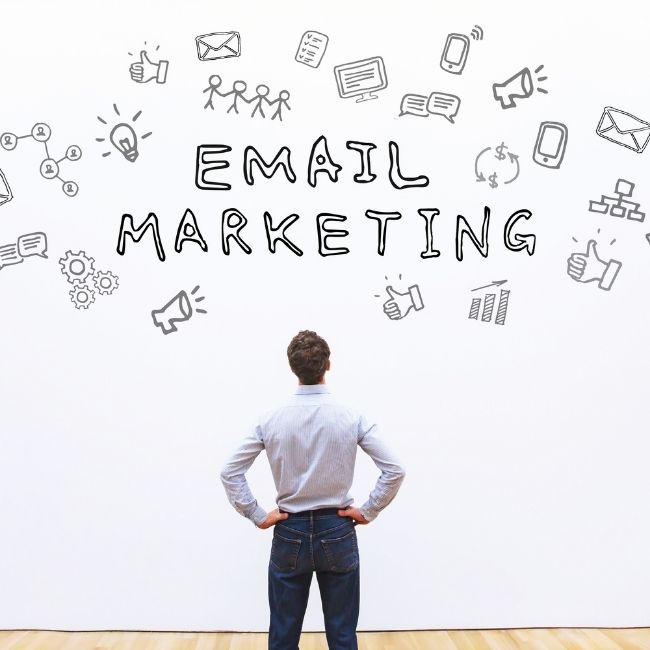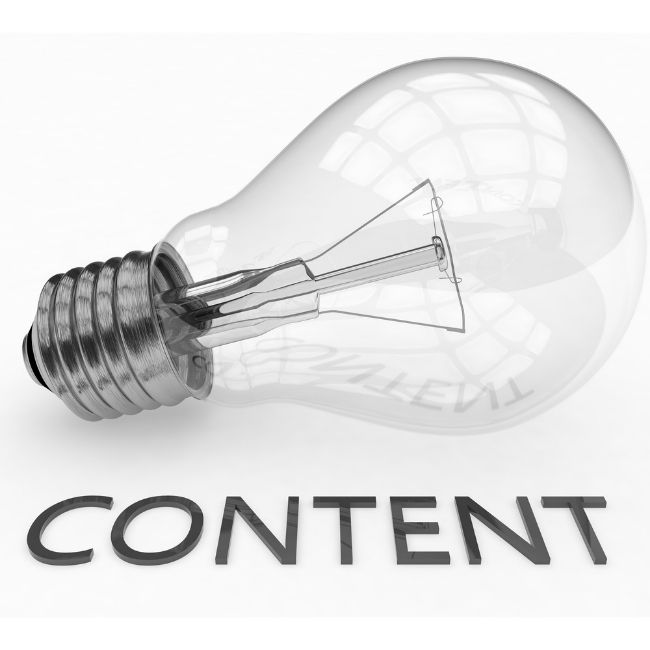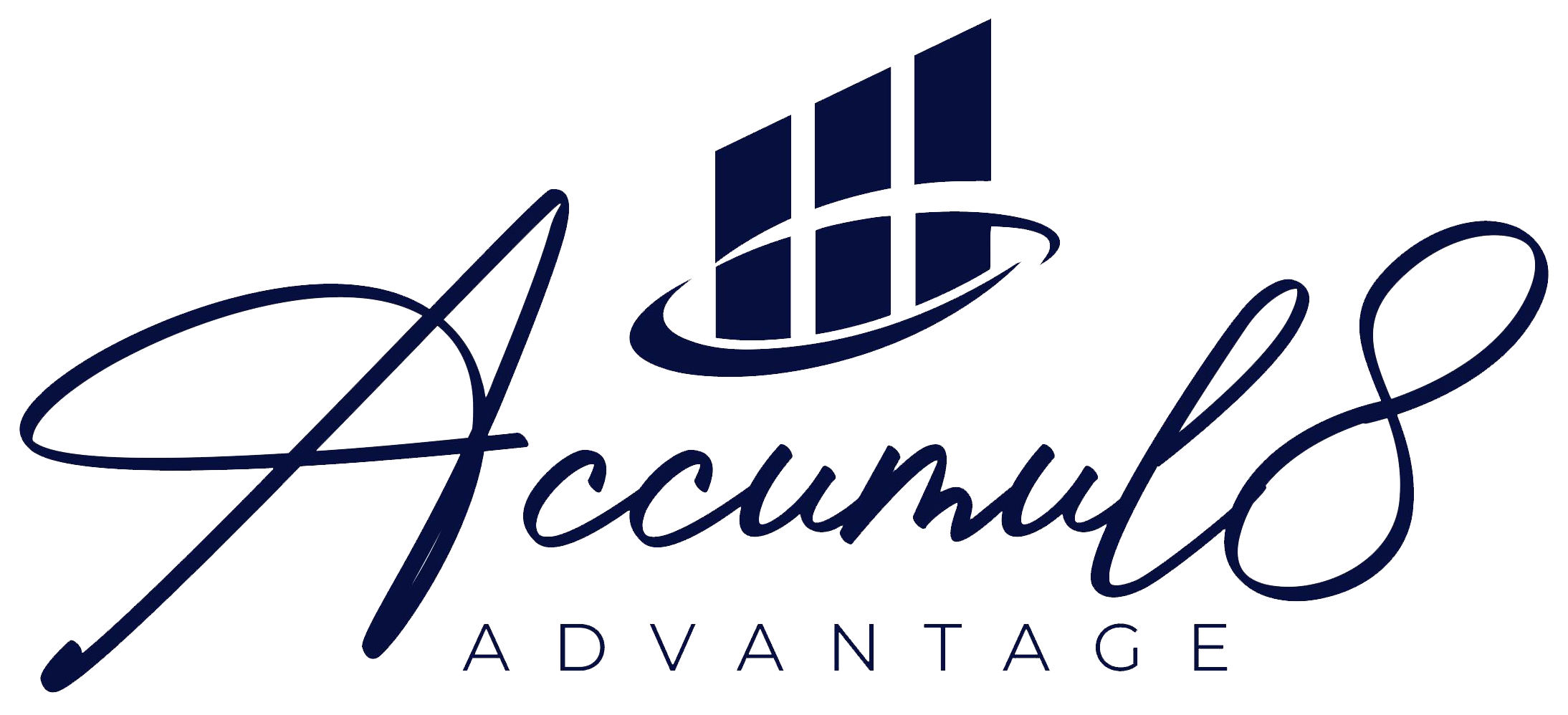
How to build an email list for fun and profit
Is email list building still relevant in a world full of tik toks, tweets, DMs and all the rest? The answer is simple – yes. And, I’ll walk you step by step through the process of how to build an email list for your business.
Too many accounting and financial service providers rely solely on social media to engage with their ideal clients. They’re not paying enough attention to one of the most valuable marketing tools they’ll ever have.
In this post, you’ll find out:
- what an email list is
- why you should build an engaged email list
- tips for finding and engaging your ideal audience
- what email list management platforms to consider
- how to engage new subscribers with a welcome sequence
- the type of content that will leave your readers wanting more
- how often you should send emails to your list
Ready to find out how you can build an engaged email list for fun and profit?
Great, let’s go.
What is an email list?
An email or subscriber list, is a list of email addresses current or potential clients have given your business in exchange for information. Generally, this can be in the form of:
- a monthly newsletter
- company or industry updates
- sales or discounts
- informative guides
- useful checklists, and
- interesting e-books
You’ll collect these email addresses through an opt-in or a subscribe form on your website, a landing page or these days, even via your social media.

Why build an engaged email list?
Imagine the only way you engage with your audience is through social media. You are renting space on someone else’s property.
Now, what happens if:
- your account is hacked?
- you’re booted off the platform for breaching some obscure policy?
- the platform changes the rules (remember, it’s their property)?
- your list is on the “wrong” platform?
Once that happens, how do you connect with the audience and prospects you’ve worked so hard to engage? How will you remind them of the expert services you provide?
Building your own list of engaged (even raving) fans overcomes all of these issues.
When you have access to hundreds, even thousands, of email addresses – you have direct access to their inbox. But, just having access isn’t going to yield the results you’re looking for. You’ll only experience higher open rates and higher conversions of email recipients into clients with an engaged email list..
As an accountant or financial services provider, I know you value numbers. What would you say if I told you that, according to Forbes, email marketing still promises to deliver the highest ROI of all marketing channels— $42 dollars return for every dollar you spend.

This is why email marketing should be a key focus for your business’s marketing strategy. Why spend dollars boosting posts on social media when you can access your ideal client’s inbox – for free?
How to build your email list?
Don’t despair if you don’t have an email list…yet. The biggest email lists all started from zero (and then Mum subscribed!). And remember, sometimes the biggest lists have the lowest engagement levels – quality trumps quantity.
Building an email list from scratch can be fun! It’s perfect for building brand awareness, showing off your brand personality, and engaging with your audience on a deeper level.
Here are a few ways you can start your email address collecting:
- a free download on your web – like a checklist or an e-book
- adding a ‘subscribe to newsletter’ tick box to your contact form
- producing consistently relevant and useful blog content then encouraging readers to subscribe
- driving your social media followers to your freebie landing page
- promoting your freebie or newsletter in your email signature
- discounts or offers via your website. For example, ‘subscribe to our newsletter and receive a free review of your wealth plan’
Get creative! Stand out from the crowd! Provide opportunities in different places for people to subscribe.
If this doesn’t give you enough ideas, Hubspot has curated a list of 39 Simple Ways to Grow Your Email List – check it out!
Must-have email list tools
Having the right tool to grow and manage your email list is crucial – a spreadsheet doesn’t cut it.
There’s an increasing number of email marketing platforms out there, and nearly all have different features and price tags.
Here are a few things to consider when researching the right email list tool for your business:
- pre-built email templates or a built-in drag and drop editor to design attractive emails
- the ability to add and automate email sequences
- bulk email campaigns that can be personalised with your subscriber details
- the capacity to create groups and segmentation of your subscribers
- reporting functionality so you can track the performance of your email campaigns
- a platform that easily integrates with your website, and even your CRM
- effective email delivery rates (you don’t want your email to end up lost in spam).

Now you know what you’re looking for, let’s get down to business.
For smaller accounting and financial firms, check out:
For larger firms with deeper pockets, bigger lists and a need for more complex functionality, visit:
Celebrate new subscribers with a welcome sequence
Having a welcome sequence that automatically sends an email when a new subscriber joins your email list is perfect to create an early connection. And let’s face it – who’s more likely to want to book your services – someone who’s been hanging around your list for years or a fresh new subscriber at the peak of their excitement looking for a way to say, ‘yes?
A welcome sequence is a set of emails that are automatically triggered when you get a new subscriber. Sadly, for many accounting and financial service providers, their welcome sequence is a basic email that says, ‘Thanks for subscribing’.
There’s no engagement. No follow-up. Only a serious case of missed opportunity.
The good news is your welcome series doesn’t have to be overly cumbersome. ActiveCampaign recommends sending 4-6 emails.
You need to have enough emails to build trust and help your contacts out before you push for the sale—five emails gives you space to devote each email to a specific topic.
Here’s a basic welcome sequence to get you started:
- Thank you email
- Give value and provide a quick win
- Tell them more about your brand story, share insights, funny stories – make it relatable.
- Give them unexpected value – surprise them with a useful resource, like a checklist on X
- Give more value, dropping a hint of how you can help them (i.e. send them to a recent post on Self Managed Super Funds and subtly hint how you can take the complexity out of it with your SMSF services)
- Have a time-sensitive offer
- Engage them with a question. Ask them what they’d like to see more of.
Give them content they WANT to read
Congratulations! You’ve got a new subscriber. They’ve moved through your welcome sequence, and hopefully, they’ve taken up your offer. If they haven’t, that’s ok – don’t give up.
The real work of engaging your email list starts now. Regular email campaigns with interesting and useful content that’s relevant to their problems, frustrations, motivations and goals is how you’ll do it. And, steadily, you’ll continue to nurture those relationships and improve your chances of converting them into a client.

Of course, the same content will help maintain the relationship with your existing clients so you can avoid the “leaking bucket” syndrome.
Here are a few examples of content you can send to your email list:
- regular email newsletters
- helpful tips and tricks that give them quick wins
- access to special offers
- invites to upcoming webinars
- spotlight on your services and/or your team
- propose solutions to their problems
- promote your latest blog post.
How often should you engage your email list?
Send too many emails, and you’re just another spammer. Send too few emails, and your email list forget who you are and why they subscribed in the first place.
According to Campaign Monitor, the sweet spot for email frequency is every two weeks. But remember, quality over quantity. Consistently useful and interesting content will give you higher open rates and better engagement. Emails that offer no value or are poorly planned will only lead to unsubscribes.
Commitment and managing the expectations of your list will help maintain engagement. Tell your list when they can expect to receive your email and commit to meeting that expectation. This doesn’t mean that you can’t change from fortnightly to (say) daily emails but you must warn your list of the change (and book a session with your psychiatrist – you are having a nervous breakdown or are about to have one!)
Want to know the best day of the week to send emails? Mailerlite gives you the insights in their post The best time to send your email based on 2021 data is…

Start building your engaged email list
Building an engaged email list for your accounting or financial services firm allows you to connect with and nurture relationships with your ideal clients.
This direct link to their inbox is a no brainer when it comes to ROI. Done right, you’ll build an engaged email list that knows who to turn to the moment they need accounting or financial advice.
Email marketing can be the jewel in the crown of your overall marketing strategy. Use the tips in this post to start building and engaging your email list.
If strategising welcome sequences, coming up with content and writing fortnightly emails isn’t your cup of tea, or you’re too busy managing the clients you already have, book a free discovery call and let’s talk about how I can help you grow your email list – for fun and profit.

Accumul8 Advantage offers a range of copywriting services for business owners in the accounting and financial services industry. With over 40 years of experience as an accountant and financial planner, Allan Johnson is the first choice for financial content that boosts your brand and attracts the right clients.
THE (IN)COMPLETE GUIDE TO BLOGGING
Knock the socks off your website visitors by taking your business blogging to the next level. Download this powerful guide for all the tips, tricks and explanations you need to write blog articles that turn readers into clients.


